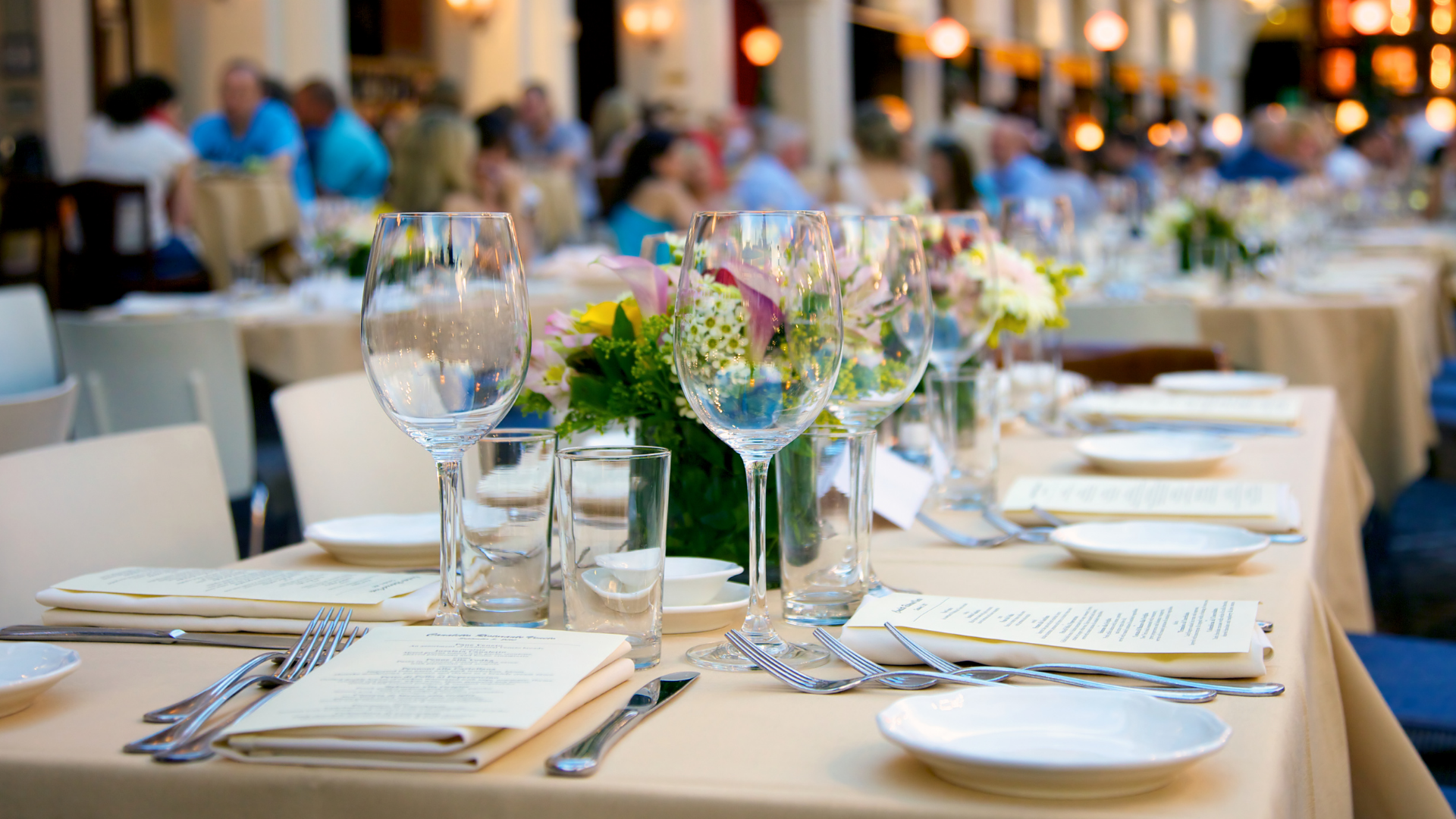A restaurant’s website is one of its most valuable tools. Potential customers often visit it first to learn about a venue’s menu, hours, and location.
The effectiveness of your restaurant design affects whether customers will place a reservation. Customers expect a quick and intuitive way to reserve a table directly from your site. Research shows that the first 10 seconds a customer spends on your website is critical for presenting a well-designed page that encourages them to linger.
A poorly-designed or confusing booking process can discourage reservations, while a streamlined system will help to convince customers to place them. Read on and discover everything you need to know for effective restaurant website design that attracts bookings.
What is website design?
Website design is creating a website's look, layout, and functionality. This includes everything from the structure of the pages and navigation to the colours, fonts, and imagery.
For businesses, website design isn’t just about aesthetics. It’s about creating a practical, user-friendly experience that meets customers' needs and represents your brand.
According to ResDiary’s Tech Trends report, 93% of diners have made a booking online in the last 12 months. Having a well-designed website to capitalise on this is essential.
A well-designed restaurant website will serve the following purposes:
- Providing essential information, like your online menu, location, and operating hours. Great website design makes it easy for customers to access this information.
- Providing a way for you to showcase your unique selling points, like your authentic approach to cuisine or unique location.
- Incorporating a restaurant reservation system like ResDiary ensures that visitors can quickly and effortlessly secure a table.
How to attract more reservations with your website design
Here are six actionable tips to help you transform your site into a tool for attracting more diners:
1. Craft a great booking experience
A seamless booking experience is a cornerstone of effective restaurant website design.
When potential diners visit your website, they should be able to reserve a table quickly and easily without encountering unnecessary steps or confusion.
The easier it is to make a booking, the more likely a visitor will become a confirmed guest. ResDiary’s widgets offer the perfect solution for crafting exceptional booking experiences.
These fully customisable widgets integrate seamlessly into your website, allowing you to match your branding and streamline the reservation process.
They enable customers to book a table in seconds, eliminating the friction that often leads to abandoned bookings.
Beyond simplicity, ResDiary’s widgets allow restaurants to add unique touches that enhance the customer experience.
For instance, you can use the promotions feature to offer extras, like a complimentary bottle of champagne on arrival or a pre-arranged tasting menu.
An excellent example of this functionality in action is Claridge’s. Their ResDiary widget enables customers to book across multiple areas of the business—restaurants, rooms, and spa services—all from one streamlined interface.

This comprehensive booking approach creates a highly convenient and user-friendly experience for site visitors, ensuring customers can easily make their desired reservation.
2. Easy navigation
Clear, intuitive navigation is a cornerstone of effective restaurant website design.
When visitors land on your site, they should immediately understand how to find what they’re looking for. That goes for your menu, location details, or a way to book a table.
Poor navigation can frustrate users, leading them to leave your site and potentially choose a competitor. That’s why prominent reservation options, such as ResDiary’s booking widgets, are essential.
These widgets should be easy to locate, ideally placed at the top of your homepage or within a fixed header. This ensures visitors can book a table without needing to scroll or search.
Making reservations effortless is one of the most impactful ways to turn website traffic into confirmed diners.
Navigation should also be logical and user-friendly. An organised drop-down menu or header bar can help users quickly locate key sections, such as menus, contact information, or events.
Clear navigation also allows restaurants with multiple locations to clearly differentiate between them and provide location-specific details, such as addresses, opening hours, and reservation links.
The Gatsby's website is a great example of effective navigation.

Its extensive navigational sidebar offers a range of options tailored to the customer, whether they want to explore the menu, learn about private dining, or view event spaces.
This structure ensures that every visitor can quickly and easily find the information they need, enhancing their experience on the site.
3. Optimise for mobile
With more than 60% of web traffic coming from mobile devices, having a mobile-optimised website is critical. Today’s diners often research, explore, and book tables directly from their smartphones.
A poorly optimised website can frustrate mobile users, leading to higher bounce rates and lost reservations. Here are a few key principles to keep in mind when it comes to mobile optimisation.
Quick load times
Mobile users are often less patient than desktop users, and long load times can cause visitors to abandon your sites. Optimising images, compressing files, and minimising code are critical to ensuring your website loads quickly on mobile devices.
Easy action-taking
Mobile navigation should be intuitive and streamlined. Key actions, such as viewing menus or making a reservation, should be accessible with just a tap.
ResDiary’s booking widgets are ideal for mobile sites. They offer a responsive, user-friendly interface that allows customers to reserve tables effortlessly.
Placing these widgets prominently on your mobile site ensures users don’t have to hunt for them.
Responsive Design
Your website should automatically adapt to any device's screen size. Responsive design ensures that content, images, and navigation menus resize and rearrange to fit smaller screens. Pages that require excessive scrolling or zooming on mobile devices will reduce the likelihood of a reservation.
4. Unique imagery
High-quality images and videos can immediately engage visitors, offering a taste of what delicious food and outstanding experience they might expect when they visit your venue.
Here are a few ways to effectively incorporate unique imagery in your website design.
Showcasing your food and brand
Unique imagery allows restaurants to highlight what sets their menu apart.
Close-ups of signature dishes and your most artful presentation are an excellent way to build a customer’s interest in your venue.
Restaurants can also incorporate photos of their suppliers, local farmers, or ingredients to build a deeper connection with customers. These elements add authenticity and help tell the story behind the menu.
For example, Lahpet, a restaurant specialising in authentic Burmese cuisine, uses on-site imagery inspired by Myanmar to reinforce its unique selling point.

With these visuals dotted around the website, visitors are immersed in the restaurant’s authenticity throughout their browsing experience.
Leverage your environment
For venues that are tied to a specific location or region, images can emphasise the unique aspects of the surrounding environment.
Take Craggy Range, a winery in New Zealand, as an example.

Its website effectively incorporates stunning photos of the vineyard and the region's natural beauty, creating an immersive and alluring experience for visitors.
Evoking a dining experience
Visuals can go beyond food and location. Videos of chefs preparing meals and shots of happy diners are also great ways to add compelling visual interest to your design.
These elements allow potential customers to visualise themselves in your space. This helps to encourage them to make a reservation at your restaurant.
5. Leverage social proof
Social proof is an important element of restaurant website design, as it builds trust and confidence in your business.
Studies show that 94% of Australians and 77% of UK residents trust online reviews when choosing a business. This highlights just how impactful testimonials and reviews can be for potential diners.
Prominently incorporating social proof on your website reassures visitors that a visit to your restaurant will be worth their time.
Restaurant owners can display social proof in several ways to boost credibility and attract bookings:
- Featuring positive reviews or ratings directly on your homepage or booking page ensures that visitors encounter positive feedback.
- Highlight articles or features from reputable third-party sites or publications to showcase your restaurant’s media recognition.
- Incorporate details about your suppliers or other collaborators. This provides social proof for your restaurant generally as well as the ingredients you use.
ResDiary makes it easy to leverage social proof by helping you gather and display reviews.
Our post-dining messaging functionality allows you to send automated thank-you emails to customers. Within these emails, you can encourage them to leave feedback for your internal use.
You can also encourage them to leave reviews in places like your Google Business Profile, which you can leverage to get more bookings and improve your SEO.
6. Highlight unique selling points
Your restaurant's unique selling points (USPs) set it apart from competitors. Showcasing them prominently on your website ensures that users understand why your restaurant is worth a visit.
Integrating your USPs into your website design through imagery, interstitials, or other elements helps communicate what exactly makes your venue special.
Some effective ways to highlight USPs in your restaurant website design include:
- If sustainability is a key part of your restaurant’s mission, showcase it with impactful imagery and concise statistics. For example, include visuals of waste reduction efforts and locally sourced produce in your design. Pair these images with data on your environmental impact for maximum effectiveness.
- Your web design should include inviting images and descriptions that showcase unique elements of your menu. This can include farm-to-table ingredients, exclusive dishes, and dietary accommodations. This will appeal to foodies and set the tone for the quality and creativity of your venue.
- Integrate interactive maps to show your venue’s convenient location or proximity to major landmarks. This can help potential customers understand the ease with which they can visit your business.
The Good Luck Coconut in New Zealand provides an excellent example of how to highlight a USP effectively.

Its homepage prominently features its unique Tiki Bar theme, showcasing vibrant imagery and interactive elements that immediately immerse visitors in the brand’s identity. In case the reader has any doubts, it flat-out states that it is “probably the best Tiki Bar in Auckland”.
When users click on the Tiki Bar section, they are taken directly to the ResDiary widget on the page, where they can easily book a table to enjoy refreshing tiki drinks.
This is a smooth user journey and clear illustration of a USP all in one. Customers can easily see what makes the venue special and place their booking.
Boost online reservations with ResDiary
ResDiary offers a suite of tools designed to elevate your restaurant's online presence and streamline the reservation process.
ResDiary’s customisable widgets help you to build a seamless booking experience directly on your website. ResDiary automatically manages availability in your restaurant, so customers will only place bookings that you can fulfil.
You can also garner online reservations in many other ways. ResDiary’s Reserve with Google integration makes it easy for diners to book directly through Google Search or Google Maps, reducing any friction in the booking journey.
Similarly, ResDiary’s Meta integration helps to extend your reach to Facebook and Instagram, enabling customers to book tables directly from your social media profiles. It’s another touchpoint where you can easily gain more reservations.
With seamless integrations and tools, your restaurant can attract more diners and create a streamlined experience to improve your service.
Book a demo today and discover how ResDiary can boost your business’ online presence.





